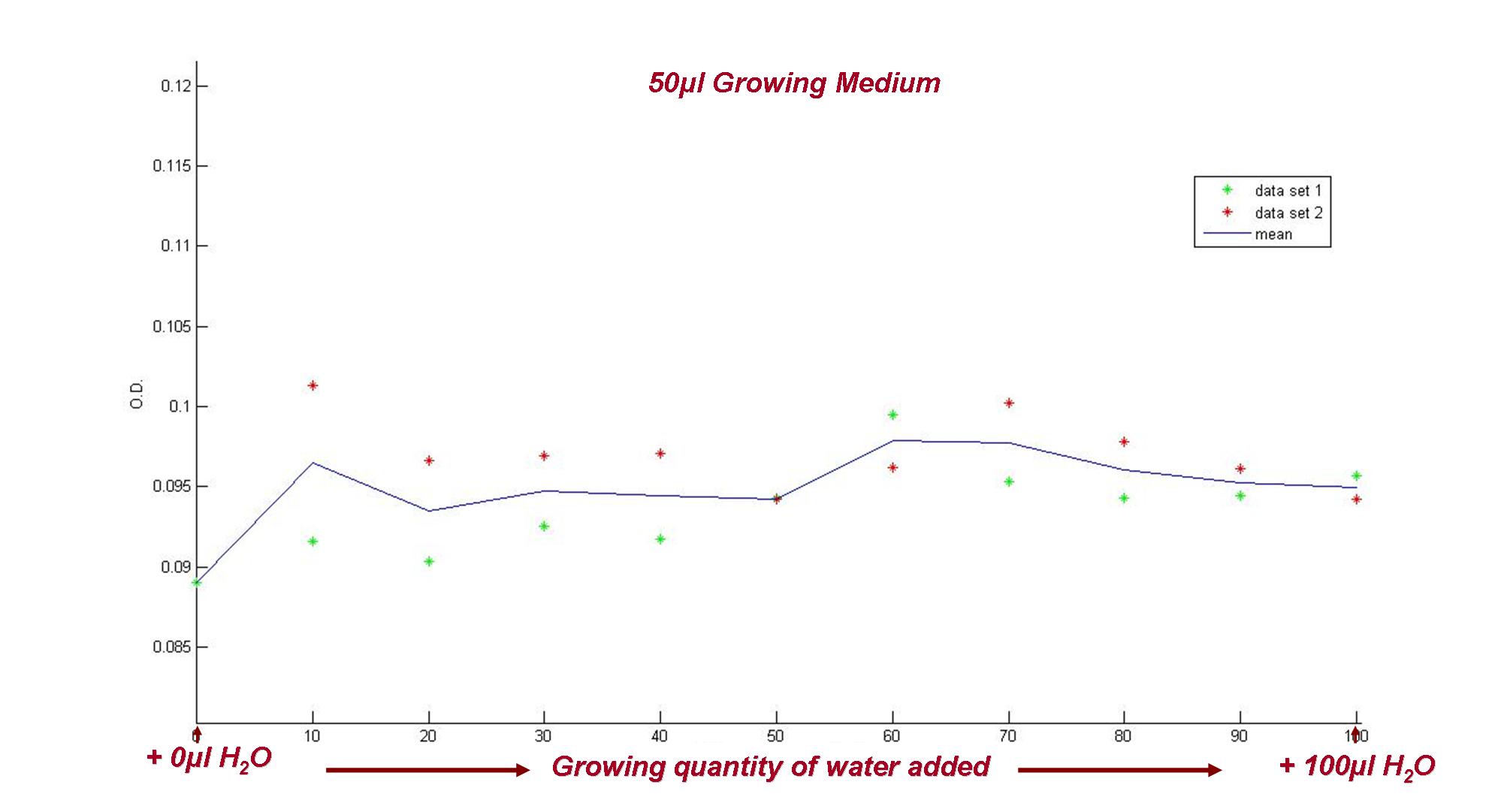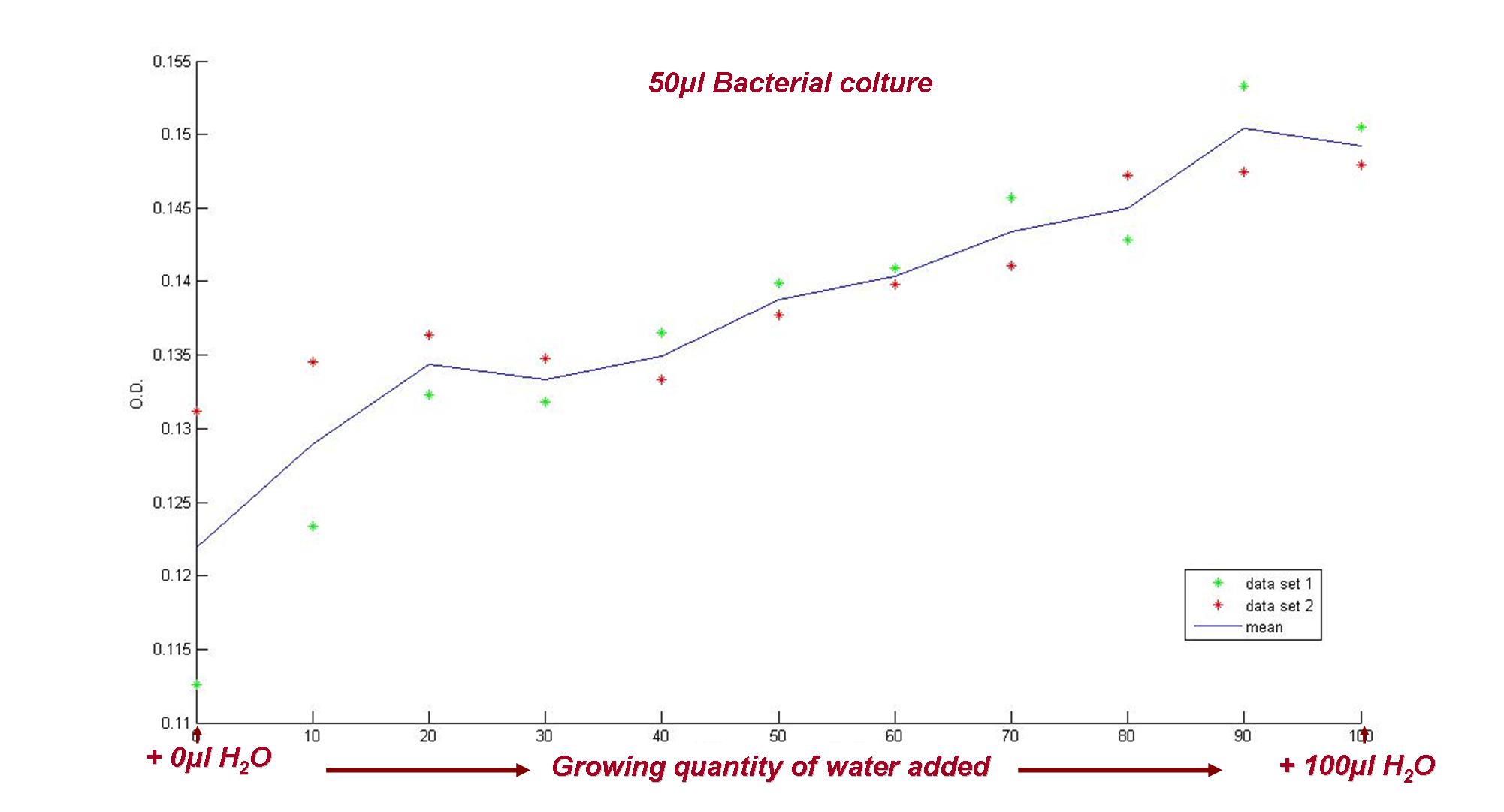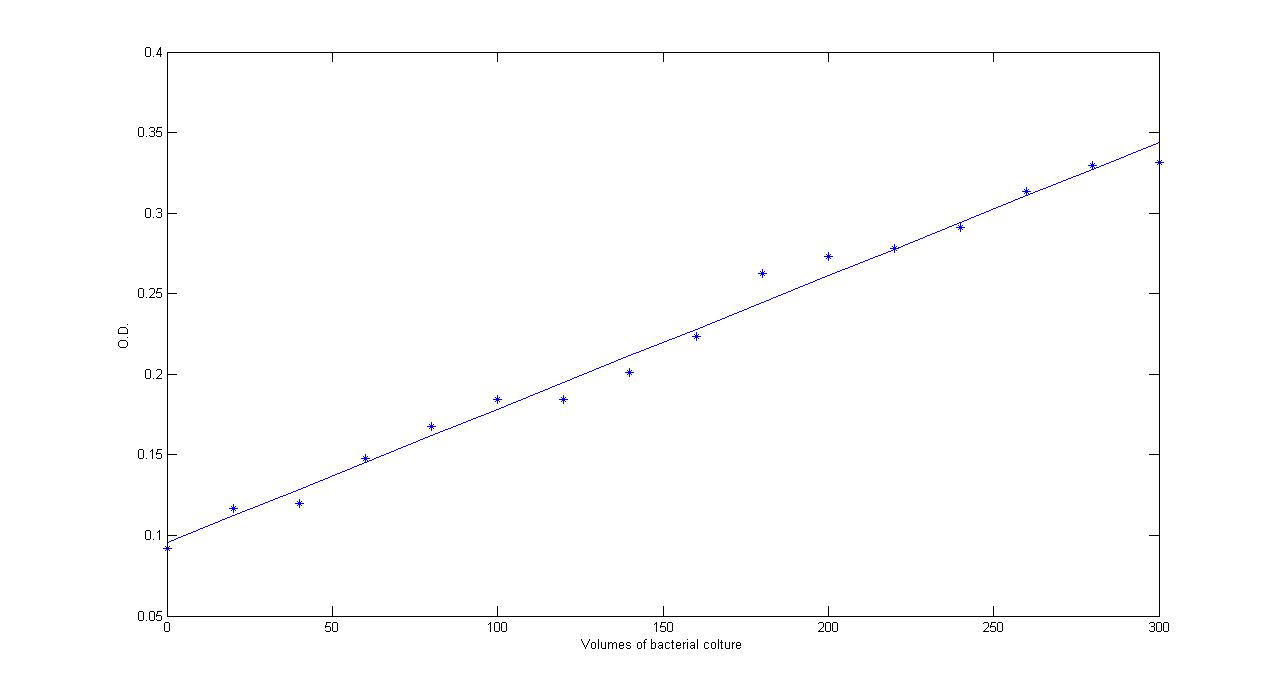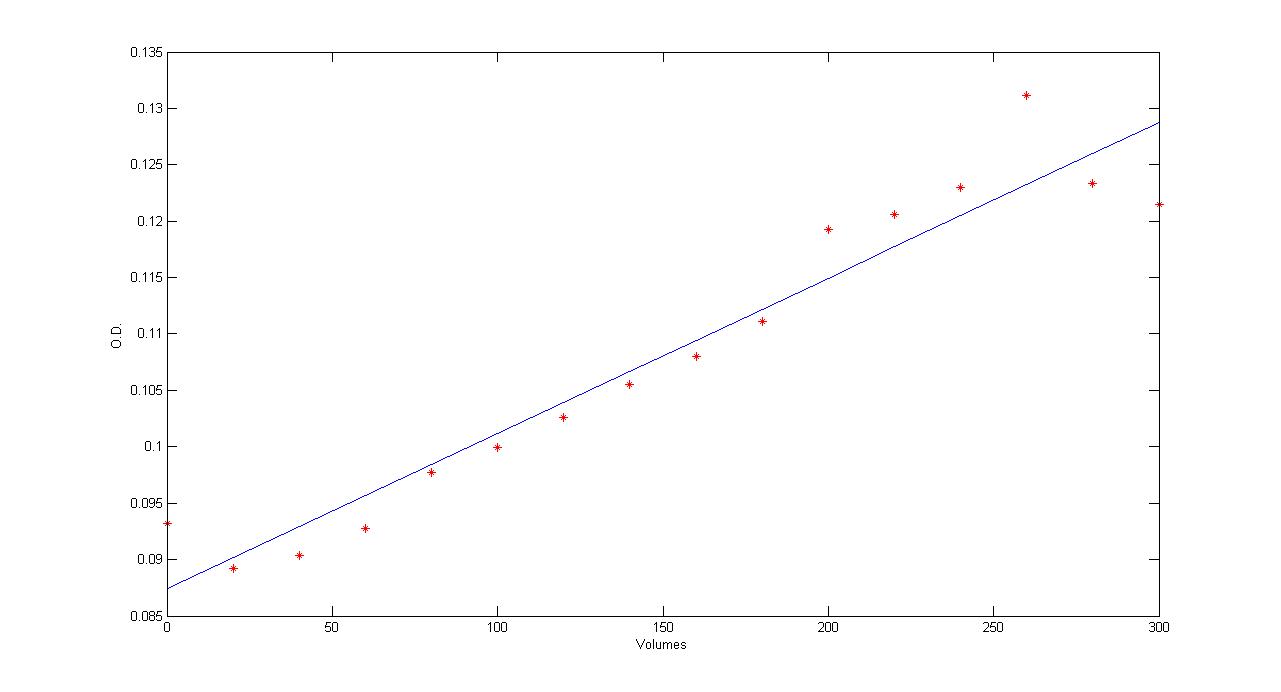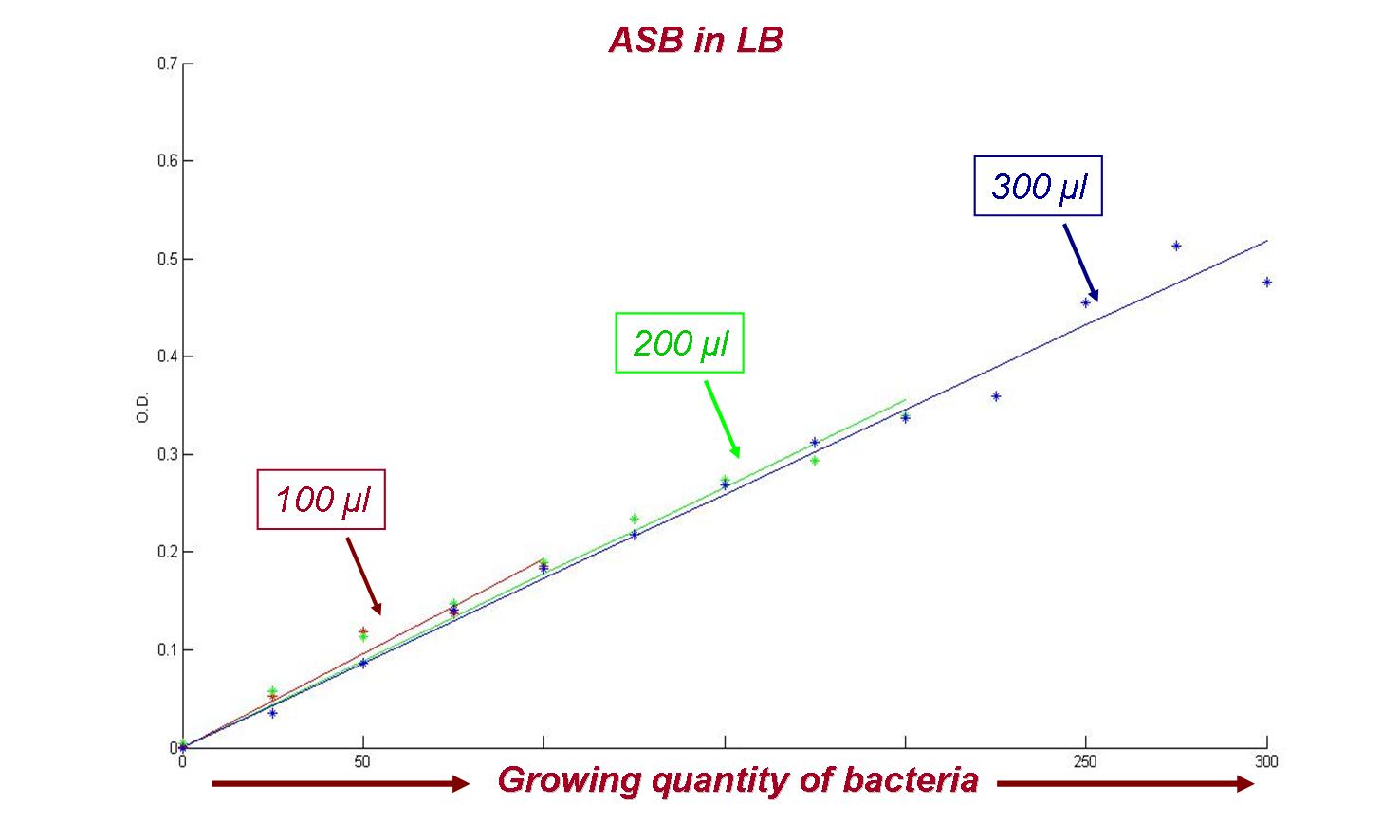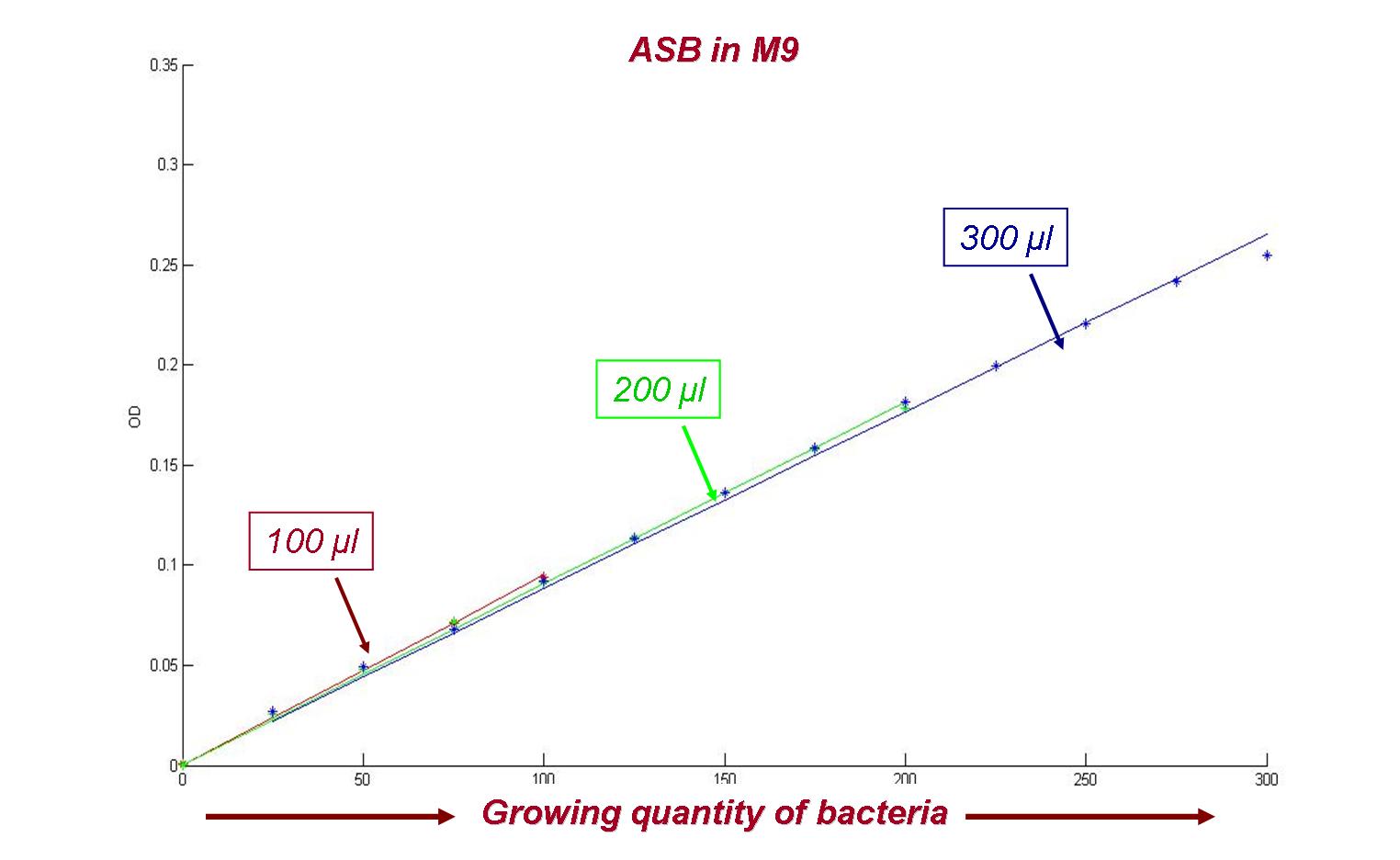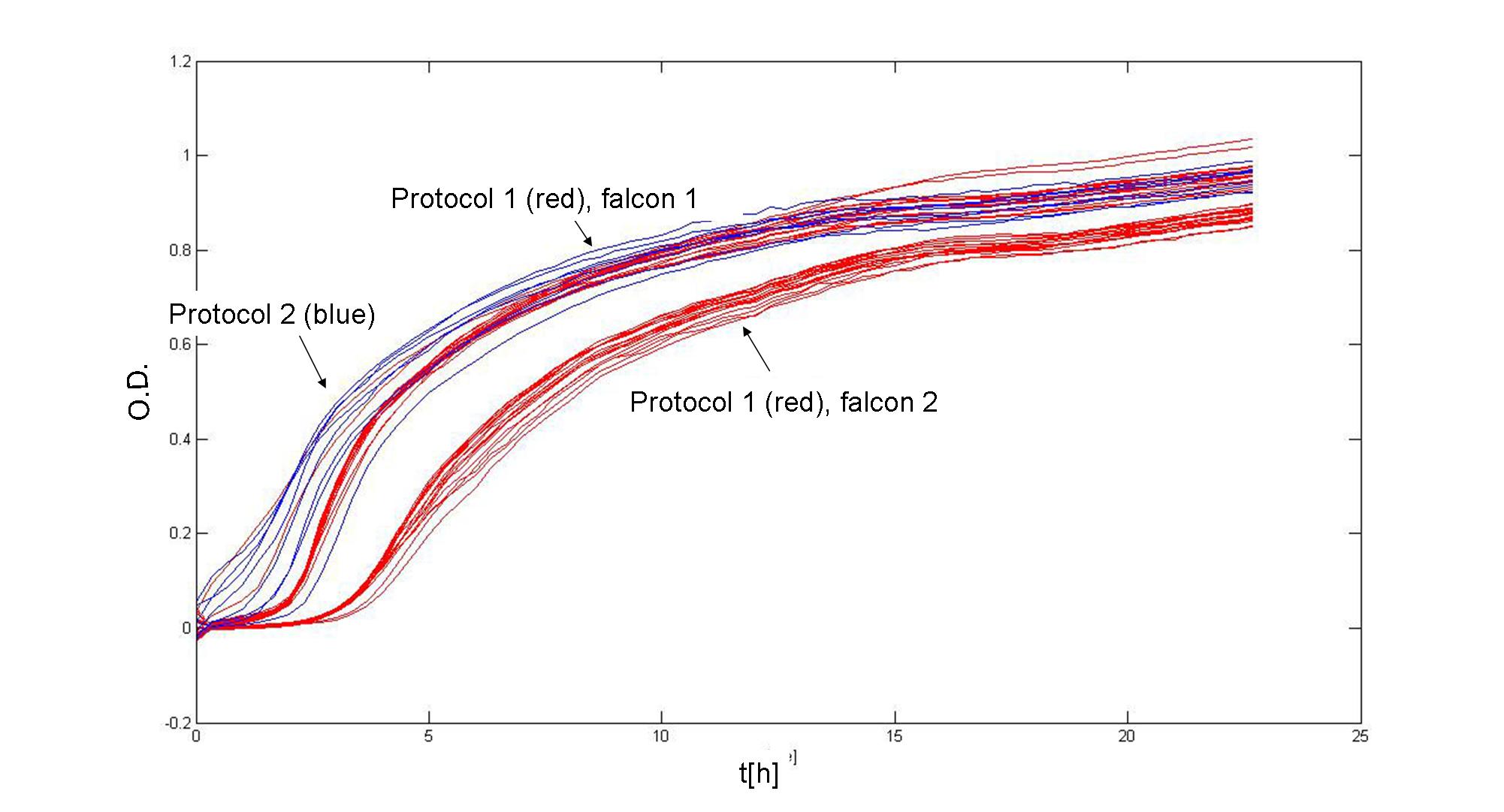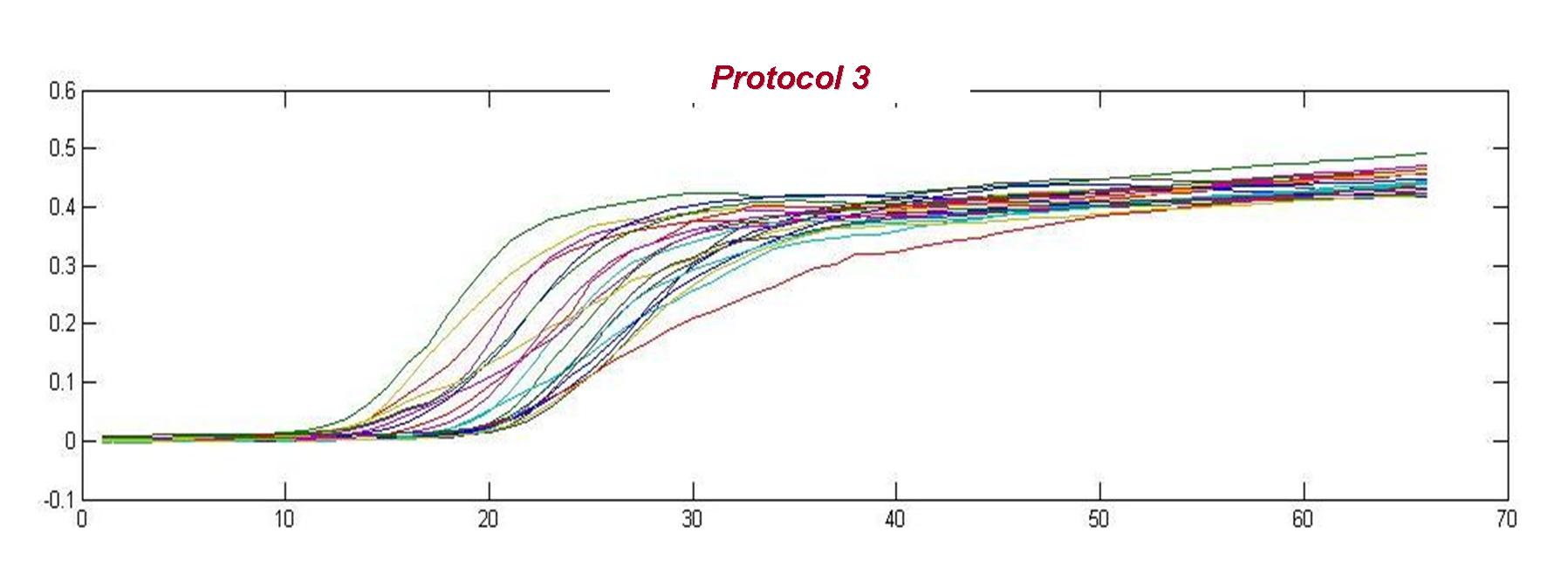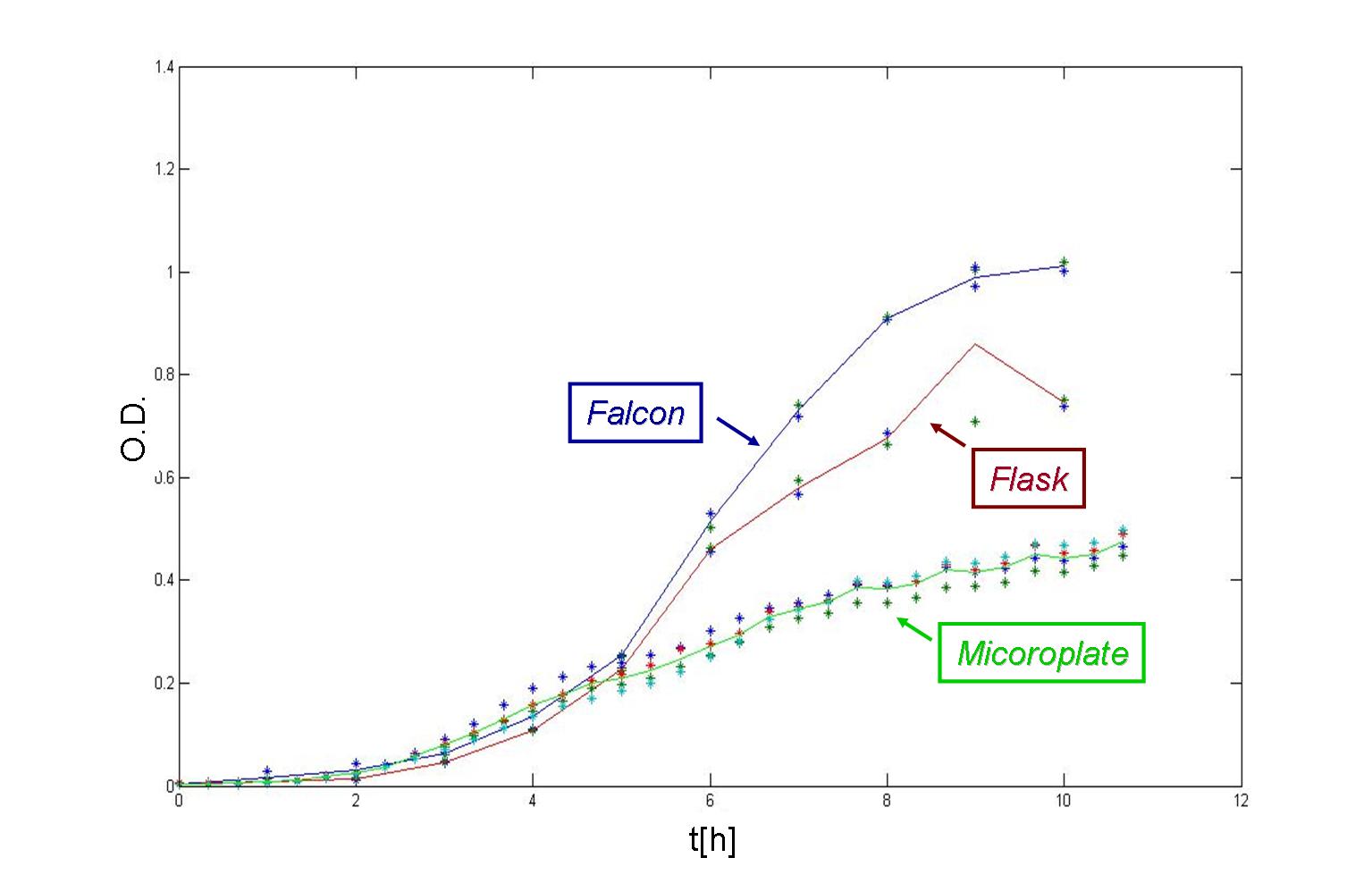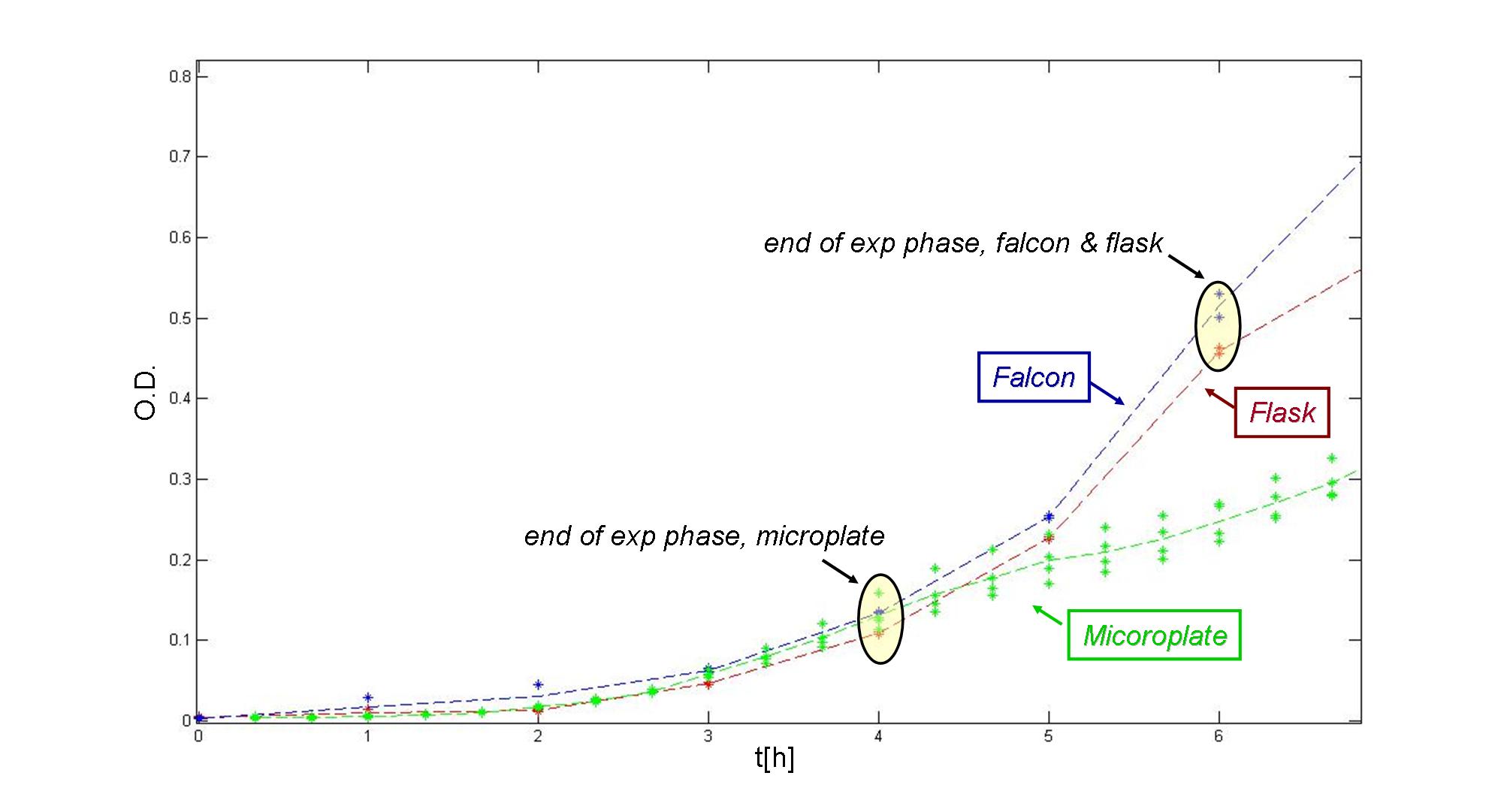Team:UNIPV-Pavia/Methods Materials/Absorbance
From 2009.igem.org

|
|
|
Measurements - Absorbance |
|
|
Absorbance and water dispensationWe find no relevant differences between the measures before and after the dispensation of different volumes of water in the well, both for simple liquid growth medium and bacterial coltures. You can find more informations about the experiment at [http://aimed11.unipv.it/iGEM2009 Download Protocol] - Test 17/10/09.
Absorbance and volumeThe proportionality between absorbance (OD600) measurement and volume of colture in the well was verified. By fitting a linear regression model on the experimental data we estimate a coefficient of proportionality of 8.27e-4 for bacterial coltures and of 1.38e-4 for LB+Amp medium. You can find more informations about the experiments at [http://aimed11.unipv.it/iGEM2009 Download Protocol] - Test n.9bis, 10/10/09 (bacterial colture), and Test 17/10/09 (LB medium).
Absorbance and dilutions in liquid growth mediumThe proportionality between absorbance measurement (OD600) and colture's dilutions was verified, confirming the possibility of using OD600 to measure the bacterial quantity in the well, regardless of the total volume present in the well. This experiment was done in two different growth mediums, LB and M9, and in three different total volumes in the well, 100μl, 200μl and 300μl. By fitting a linear regression model on the experimental data we estimate a coefficient of proportionality of 0.0018 for LB medium and 0.0035 of for M9. You can find more informations about the experiments at [http://aimed11.unipv.it/iGEM2009 Download Protocol] - Test n.20, 13/08/09 and Test n.20 "M9", 28/08/09.
Different protocols for different growth curvesAs our first step we wanted to individuate a proper protocol to have reproducible growth curves for the coltures incubated inside the microplate reader. We compared three different solutions, as you can see in the figures below. Protocol 1:
Protocol 2:
Protocol 3:
You can find more informations about the experiment at [http://aimed11.unipv.it/iGEM2009 Download Protocol] - Test n.5, 18/06/09.
On the other hand, protocol n.1 ensures a perfect reproducibility of the curves coming from the same falcon tube. Clearly coltures from different falcon tubes evolve in different way. For all these reasons we decide to use this protocol in our experiments.
You can find more informations about the experiment at [http://aimed11.unipv.it/iGEM2009 Download Protocol] - Test n.6, 27/06/09.
Growth ambients in comparison
|
 "
"

